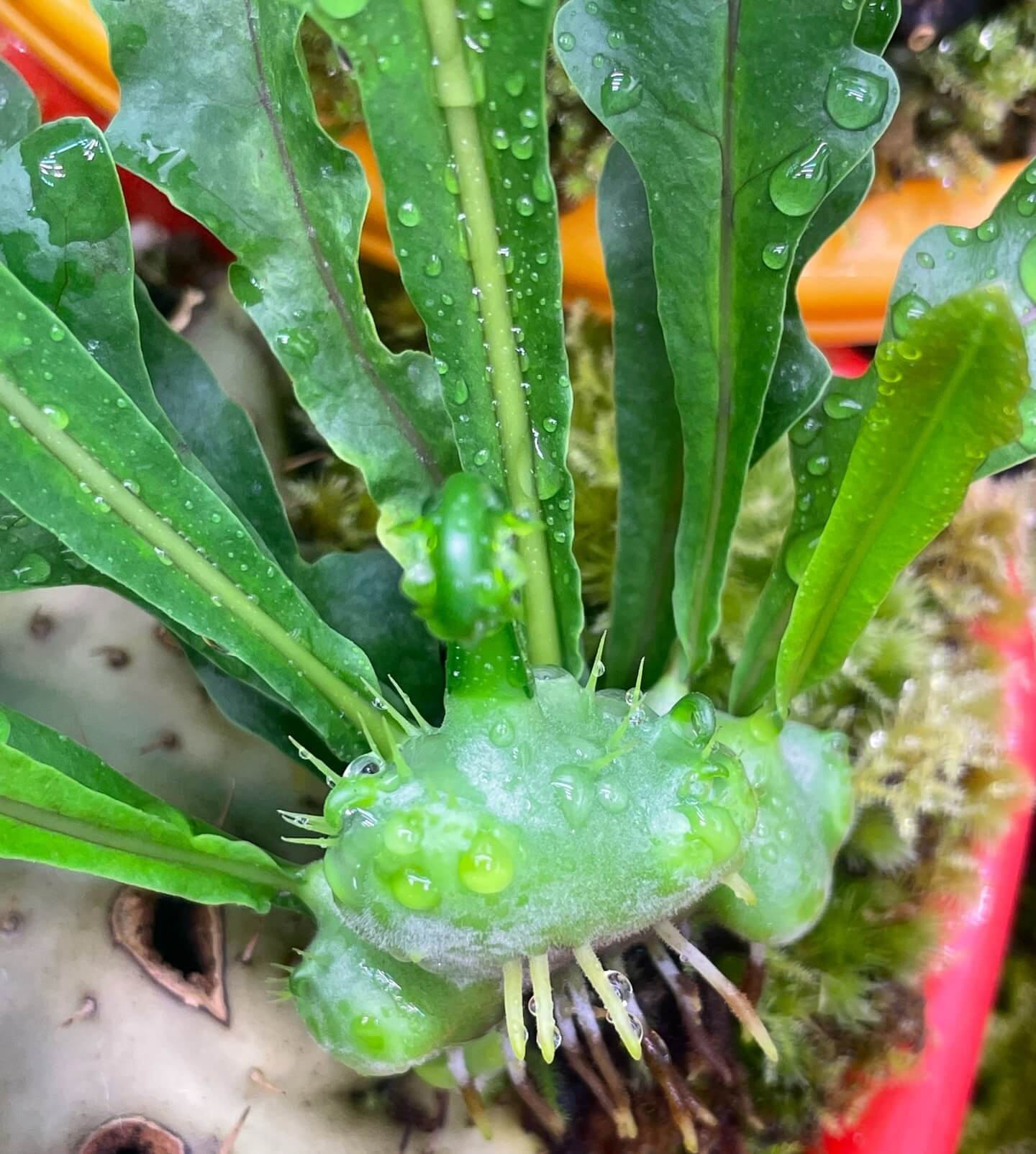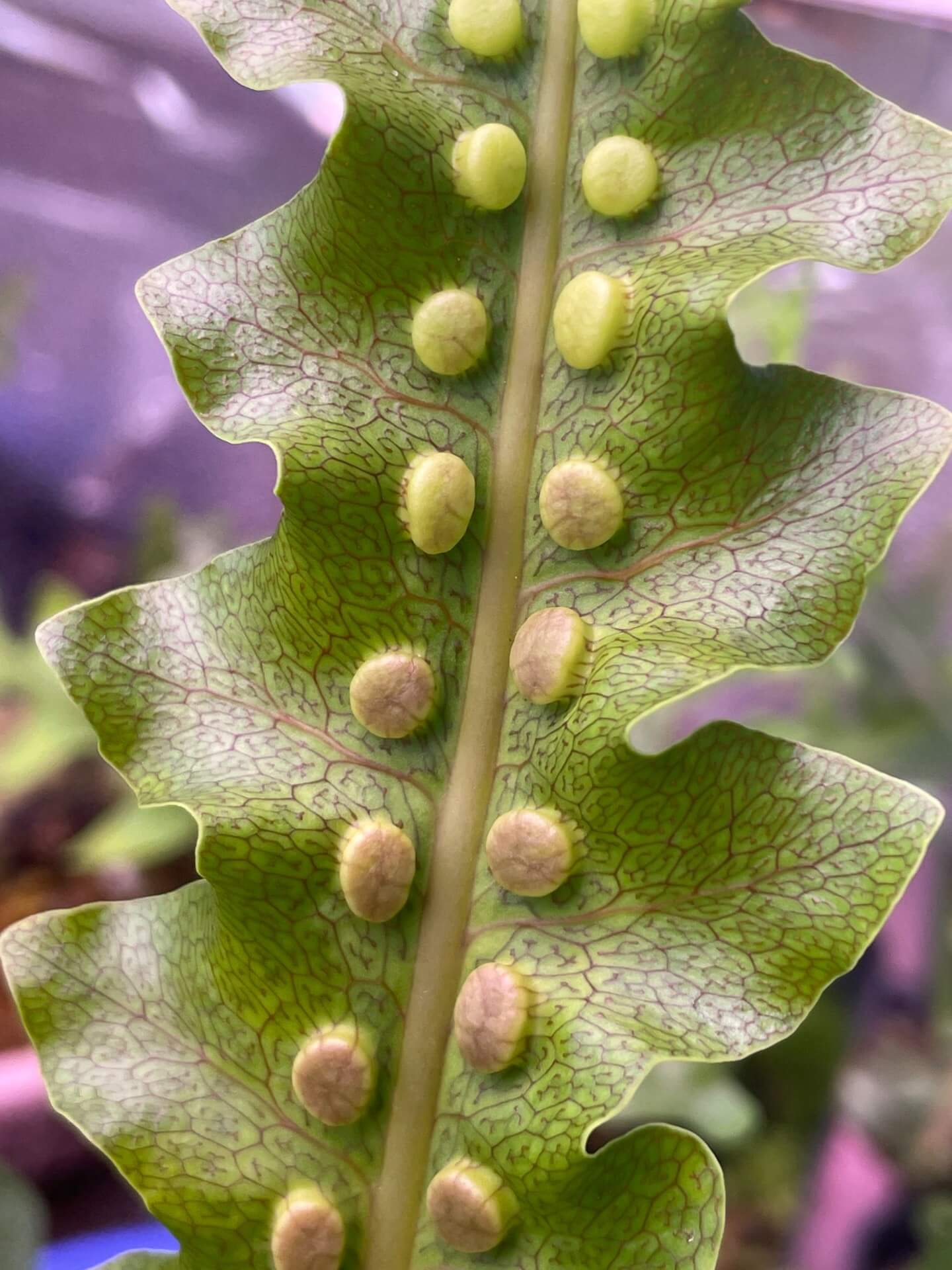Begin With Plants
Lecanopteris spinosa 'Ant Fern'
Lecanopteris spinosa 'Ant Fern'
Couldn't load pickup availability
Lecanopteris spinosa is a rare, epiphytic fern native to South Sulawesi, Indonesia. It stands out with its branched, creeping rhizomes forming clumped, ball-like structures up to 25 cm across, densely armed with rigid spines. The rhizome is initially pale green and glaucous but turns black with age; the inner tissue dries and forms hollow chambers where ants may establish nests.
Features:
-
Unique Rhizome Structure: Creeping, branched rhizome (2.5–4 cm diameter) forms layered clusters and develops dense, strong spines (up to 6 mm) but lacks scales except in very young parts. Hollow cavities develop as the rhizome ages.
-
Ant Symbiosis (Myrmecophyte): Hollow rhizomes can host ants, providing mutual benefits. Ants get nesting chambers; the fern gains nutrients from ant debris and enhanced protection. Though facultative, this symbiosis is common in Lecanopteris species.
-
Fronds: Fern fronds are simple or lobed, sessile, leather-like, up to ~30 cm long and a few centimeters wide. Sori are round, embedded in the frond surface, aligned in rows along the rachis, and immersed without protective indusia.
Care Tips:
-
Light: Provide bright, indirect or filtered light—emulating a tropical forest understory. Avoid direct, hot sunlight.
-
Humidity & Watering: Keep the growing medium consistently moist but not waterlogged. Mist regularly or use humidity trays. Aim for moderate to high humidity (around 50–60%).
-
Temperature: Best grown in warm conditions—maintain around 21–29 °C (70–85 °F) by day and 18–24 °C (65–75 °F) at night. Protect from temperatures below 15 °C.
-
Substrate & Mounting: Mimic its epiphytic nature by using a porous, well-draining substrate such as orchid bark, sphagnum moss, perlite, or a mix. Mounting on cork, tree fern slabs, or in airy pots encourages healthy growth.
-
Watering Frequency: Water thoroughly once the top mix begins to dry—usually every 5–7 days depending on your environment. Avoid burying the rhizome.
Share



